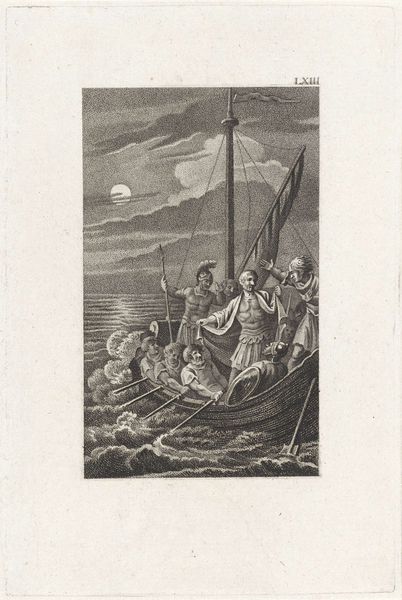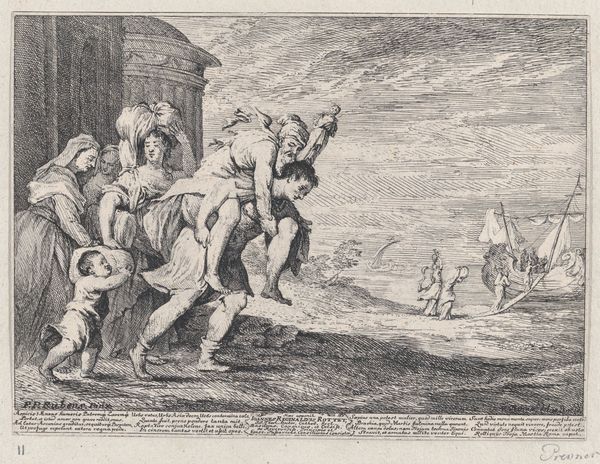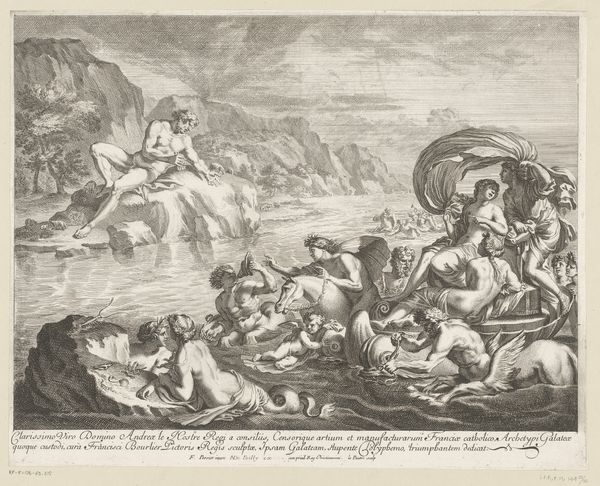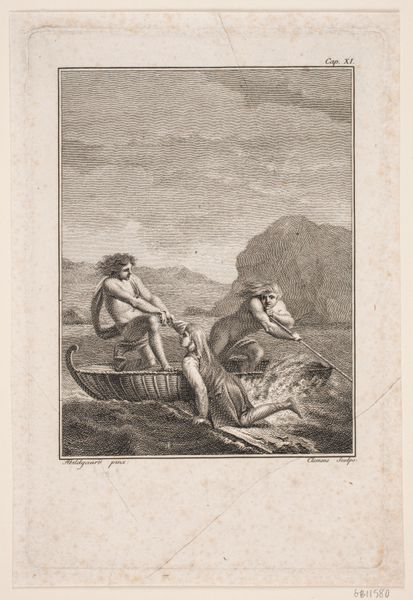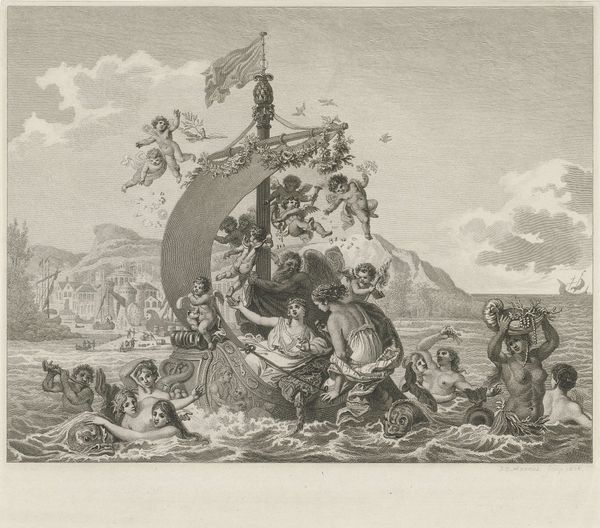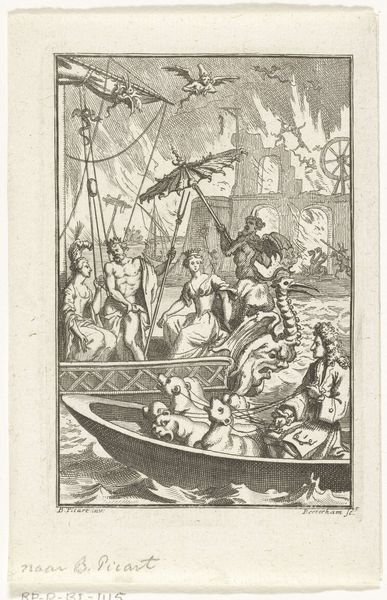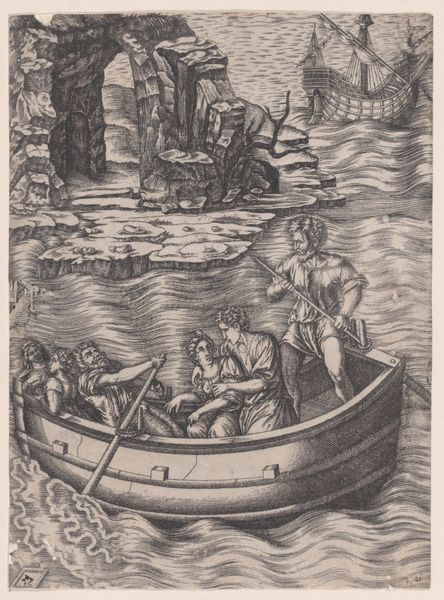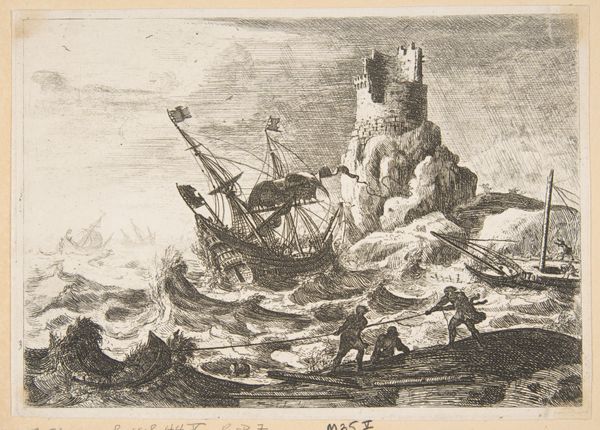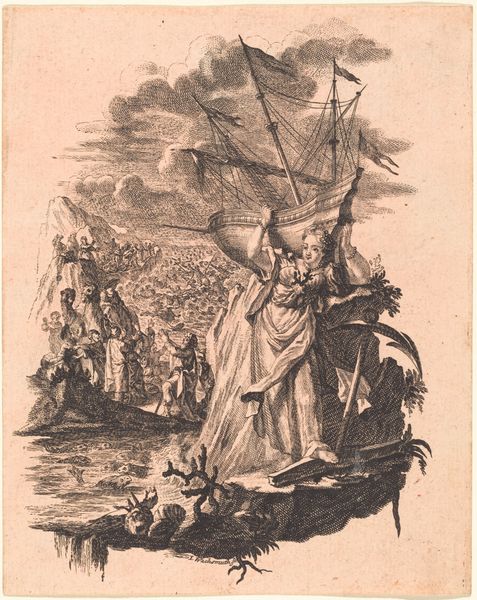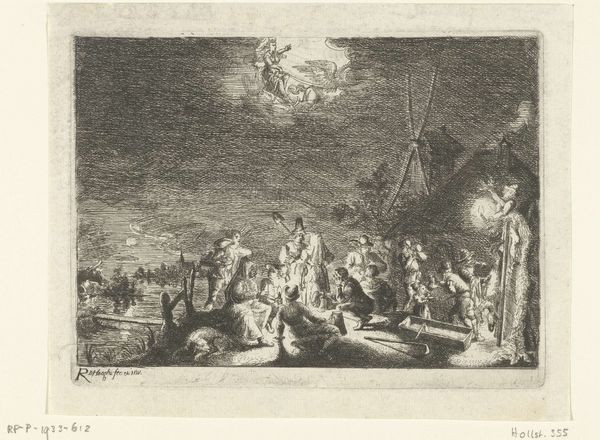
drawing, print, engraving
#
drawing
#
boat
#
allegory
#
baroque
# print
#
landscape
#
figuration
#
classicism
#
men
#
line
#
history-painting
#
engraving
Dimensions: sheet: 22 1/16 x 15 3/4 in. (56 x 40 cm) plate: 15 3/8 x 10 5/8 in. (39 x 27 cm)
Copyright: Public Domain
Curator: Before us is "Allegory of Time," a print by Bernard Picart, dating approximately from 1690 to 1733. What are your initial impressions? Editor: Dark, urgent. There's a real sense of toil conveyed through the figures rowing this precarious boat. The stark contrast created by the engraving process makes it feel…unforgiving. Curator: Indeed. Note the meticulous line work. Each stroke contributes to a classical composition, typical of the Baroque era. Look at the boat, it's laden with figures seemingly propelled by Father Time. The repetition of oars pulled by laborers really emphasizes the relentless passing of time. Editor: Absolutely. But it's more than just skillful execution; the texture and contrast invite questions about labor and materiality, How many impressions of this print were made? How were these mass produced images consumed within this society? It makes me consider how art democratized access to allegorical concepts for the common person. Curator: An astute point. The medium itself carries significance. This is not a unique artwork, but a reproduction designed for broader circulation. That inherently shifts its artistic function. Still, one cannot deny the composition's deliberate structure, where classicism meets Baroque intensity. I note how Picart cleverly arranged the figures, echoing Nicolas Poussin's sense of dramatic narrative structure. Editor: True. The contrast between the muscular figures rowing with apparent physical effort and the serene cupids is very powerful. And it raises questions of value, Who is defining the terms for ‘high art’ versus popular craft and why? Are those figures trapped within this narrative, laboring without reward? Curator: I believe Picart encourages deeper contemplation on the passage of existence. In any case, by deconstructing form and content within this framework, we move toward understanding how prints shape their viewer and the societal context of its production. Editor: Yes. The production is vital; it gives art accessibility while, paradoxically, being created within structures of privilege. Reflecting on "Allegory of Time" prompts us to really challenge art's consumption while considering its creative origins. Curator: Indeed, a worthy inquiry, reminding us of the multi-layered conversation that arises from even a seemingly straightforward print.
Comments
No comments
Be the first to comment and join the conversation on the ultimate creative platform.
